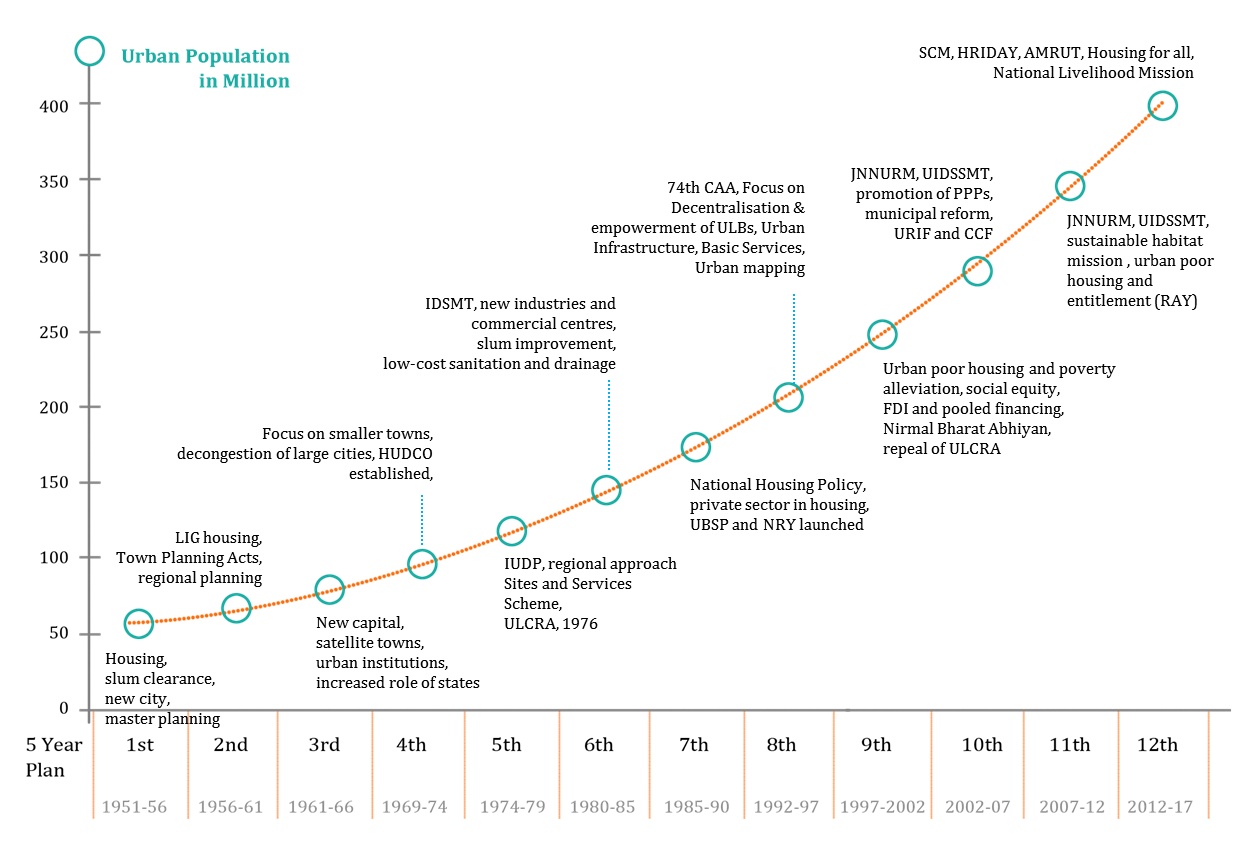Trajectory of India’s Urban Development

Post-independence, India’s urban development trajectory can be broadly divided in three stages. The first stage spanned 15 years (First to Third Five Year Plans) and the approach was fragmented. The first three Plans were marked by efforts towards housing provisions, slum clearance and rehabilitation. The Second Five Year Plan (FYP) provided for the creation of town and country planning laws and initiated planning institutions, after which rigid Master Plans for a number of cities were developed. Two state capitals and industrial towns were developed in the Third FYP.
In the Fourth, Fifth and the Sixth FYPs, urban planning took a different pathway – Fourth FYP emphasized the need to limit urban population growth, Fifth FYP promoted smaller towns and the Sixth FYP focused on towns, developing roads, pavements, bus stands, markets, etc. Overall, slum clearance gave way to slum improvement and the emphasis shifted to development of small and medium towns and promoting balanced regional development.
The second phase started in the 1990s, whereby reforms were instituted in the form of the 74th Constitutional Amendment, which enabled the devolution of funds, function and functionaries to the urban local bodies (ULBs). Interest in the development of cities was renewed with the launch of Jawaharlal Nehru National Urban Renewal Mission (JNNURM) in 2005 across 65 large cities, which was expanded to cover smaller cities also. The last decade of urban reforms has led to the emergence of City Development Plans (CDPs) as a product of JNNURM and Urban infrastructure Development Scheme for Small and Medium Towns (UIDSSMT). While Master Plans continue to be the spatial planning tool with a set of Development Control Regulations (DCR) enforced by the ULB/development authorities, CDPs stand as project-investment plans for cities, with minimal spatial reference. Moreover, there are plans pertaining to different sectors such as transportation (City Mobility Plans, CMP), water, sanitation (City Sanitation Plans, CSP), drainage, etc. at the city or regional level based on specific institutional jurisdictions. Figure 1 given below gives the Plan period-wise focus.

Figure 1. Plan period-wise policy focus
Source: C-Step (2015)
In the first two stages, little attention was paid to integration; in fact, integration was lost due to the simultaneous existence and functioning of multiple plans. The third phase gets over this and is founded on the idea that cities are complex eco-system where different elements and actors are interconnected, influence one another and are also influenced (interact). A key strategy is to allow for cross-sectoral integration complementing the existing focus on single-sector interventions. Some of the single sector interventions are, Swachh Bharat Mission (SBM) and Atal Mission for Rejuvenation and Urban Transformation (AMRUT). On the other hand, the Smart Cities Mission (SCM) is based on integrated planning and implementation. Integration is the new paradigm ushered in by the third stage of urban development.
(Views are personal)



Total Comments - 0